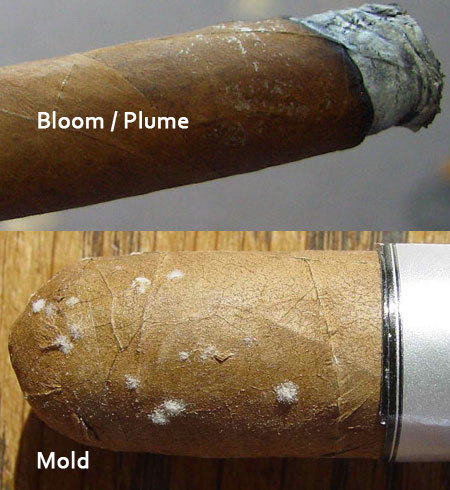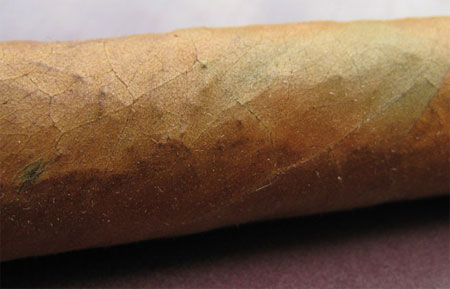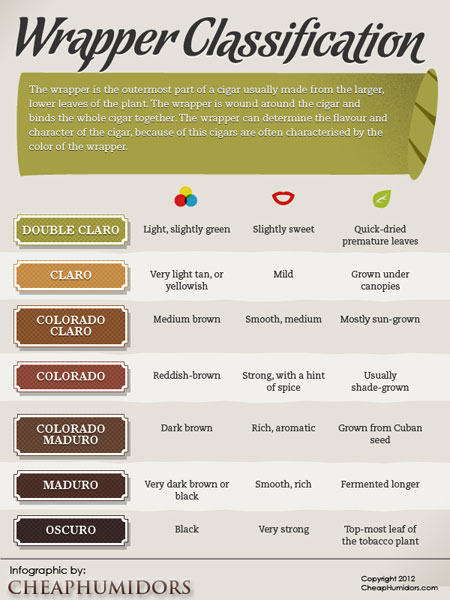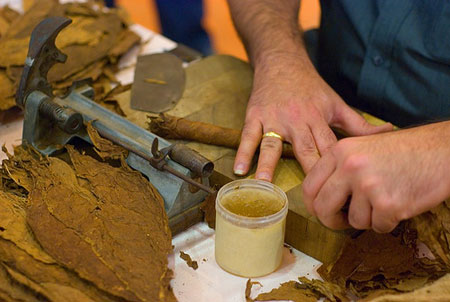Every week, I get at least one question about cigar wrappers. What’s the relationship with the wrapper color and power, is this mold or bloom, where does an Ecuador Connecticut wrapper come from, etc, etc. I figured it could be a good idea to compile a list of frequently asked questions about cigar wrappers and provide short to the point answers within a single article. I decided to start with 7 questions, but your additions are welcome in the comments area below!
Can I guess the cigar’s flavor/power just by looking at the wrapper?
It’s a common misconception that you can easily determine how strong or flavorful a cigar is by looking at the color of the wrapper, but this is not the case. Many people equate light-colored wrappers with light smokes and dark-colored wrappers with strong smokes, however this is not a reliable gauge as maduros can be rather mild whereas cigars wrapped in claro leaves may surprise you with their power.
How many different wrapper colors are there?
There are 50 different wrapper colors and the most used categories are: Double Claro (also known as Candela or Jade), Claro, Natural, Colorado Claro, Colorado, Colorado Maduro, Maduro, and Double Maduro/Oscuro. These categories are listed in rough order of lightest to darkest, though it can be difficult to tell similarly colored cigars apart at a glance. Here is a nice infographic created by our friends at CheapHumidors.
What’s AMS and EMS?
American Market Standard (AMS) wrappers are light green in color and are also called Double Claro, Jade, and Candela. This is due to the fact that this wrapper used to be very popular in the US back in the 50’s. English Market Standard (EMS) wrappers include Claro, Colorado, and Natural wrappers, and are made from tobacco leaves grown in Connecticut, Cameroon and Cuba. You can also run into SMS – Spanish Market Standard, which are Maduro and Double Maduro / Oscuro leaves.
Why are two countries referenced?
Sometimes two countries will be referenced in a cigar’s technical specs, both referring to the wrapper leaf. This generally means that the seeds come from one country but were transplanted and grown in another. The first country name references the place the tobacco was grown while the second references the origin of the seed which was used. So let’s say you had a cigar which had a wrapper labeled as Ecuadorian Connecticut. This means that a seed from Connecticut was transplanted to Ecuador where it was grown into the wrapper leaf which was used in your cigar.
Mold, bloom, plume? What are they and how do I recognize them?
Cigar bloom, also called cigar plume, is a type of crystallization which occurs because of the oils in the cigar. Bloom won’t impact the flavor of a cigar, and it only occurs when a cigar has been well kept for a long time period. Cigar mold, on the other hand, happens when your cigar is kept in conditions where humidity exceeds 80%. Mold looks “fuzzy”, and bloom does not. The colors of mold can vary widely from white and yellow to blue or green. Note that bloom also is uniform in its appearance whereas mold is spotty and grows in clusters.

What are those green patches on my cigar?
Assuming the green patches are flat and clearly just color distortions and not growths like mold, they are harmless and will not impact the experience in any way. They are caused by imperfect conditions during curing for the most part. Any time water gets on a leaf when it isn’t supposed to it can cause these blemishes. They’re nothing to worry about. Oftentimes you can get blemished cigars at a discount.

What about the white spots?
Once again, assuming the spots aren’t a growth, they are probably the result of water damage. Water damage white spots are usually defined by clear outlines. They are equally harmless and won’t impact your experience.



@Tony Portale
As far as I know, the term ‘rosado’ is used to describe the color of the wrapper, it’s not related to the aging process or to the seed that was used. The color is close to ‘colorado’ (see chart above), with a reddish tint.
I’m still a little confused about a ‘Rosado’ wrapper. Is it a cigar leaf that has been aged differently than let’s say a maduro? Or is it a seed of it’s own? Is it just a different part of the plant used to create a Rosado wrapper?
Thank you
Very informative and helpful. The advice is very appreciated – any cigar smoker should know about this site. From wrapper types, seed origin, and plume, this is must-read info.
@Inspector
Thanks for the clarification, appreciate it.
John
Thanks for that, really nice to have a quick visual reference. Especially for beginners!
My compliments to Zen for his comprehensive reviews. I’ve always enjoyed Zen’s blog and am happy he/she has merged into cigar inspector.
I noticed that a few of my cigars had tiny (tiny) almost microscpoic “crawlies” on them. They were almost translucent in color. I took a basting brush (because it has very soft bristles) and simply brushed them off. I put the cigars in a baggie and cleaned/reseasoned the humidor. What were these likely to be and what was my problem/the casue of it and or do I potentially have a VERY serious problem?
@JohnH
Plume is not really an issue. You can clean it off, but I usually just leave it as it is and my cigars smoke fine.
It’s a different story with mold: if the mold is white, you can indeed clean it off and the smoke should be OK (some people even say that it improves the flavor…), but you must be aware of the fact that the mold is also _inside_ the cigar, so cleaning it off only does an aesthetical improvement.
If the mold is green or blue, on the other hand, it’s a different story and in most cases the cigar is lost.
Dennis,
I’ve heard that both mold and bloom can be cleaned off the cigar before smoking and the smoke will be fine. Any thoughts on this?
John